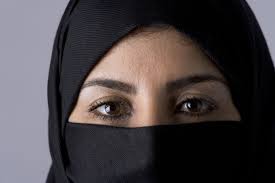Introduction and Background
The debate between the place of niqabs in Canadian Citizenship ceremonies is a complicated one.
Well-reasoned arguments have been put forth by both sides, some like Omar Aziz who pointed out in his piece that while a woman’s freedom to dress as she wishes must be protected, the niqab itself challenges our foundations of liberal democracy in Canada. Gerald Kaplan, in his piece admits that he was first put off by the niqab but that having met several Muslim women (many of whom proudly wore the niqab), he changed his views and believed that both the infringement of a woman’s right to choose how to dress and the making of the niqab a political issue was not appropriate.
Just recently, through a last-minute Bill introduced into the House of Commons prior to its pre-election summer recess, Minister of Multiculturalism and State Tim Uppal, has solidified that the Government’s position that the niqab must not be worn at a Citizenship ceremony. Bill C-75, or the Oath of Citizenship Act, would make it a requirement for all individuals to have their face uncovered and be seen and heard taking the Oath of Citizenship. This comes in light of another recent development, which saw Tim Uppal support his fellow MP Lisa Raitt in a decision to waive a new CATSA requirement for individual who wear headgear (i.e turbans) to have them inspected during secondary screening.
What is very interesting about Bill C-75 is that it comes at a time where it has no possibility of being passed into law prior to the election in the Fall. It also comes at a time where the Federal Court of Appeal has yet to decide on the Federal Government’s appeal of the ruling of Justice Boswell of the Federal Court of Canada in Ishaq v. Canada (Minister of Citizenship and Immigration) 2015 FC 156.
In Ishaq, the Applicant filed a Judicial Review for declaratory relief of the requirement that she reveal her face during the Citizenship oath. She had completed all of her other obligations, and had even revealed her face prior in order for her identity to be confirmed. At the time there was both an Operational Bulletin and Manual which required as a matter of policy that an individual visibly reveal his or her identity during the oath. Justice Boswell found that this policy was unlawful both in light of the Citizenship Act and Regulations which required only that the oath be sworn and that a signature be signed and contained no language regarding visual identification. Justice Boswell did not, however, tackle the Charter issues raised and decided it was sufficient to find the policy unlawful.
Bill C-75 thus represents the Government’s steps to address many of Justice Boswell’s concerns regarding the pre-existing policy. As discussed the Federal Government’s appeal in the case is still in process.
My Perspective
I think the main challenge we are having with this debate is that the harm principle (as set out by famous utilitarian political thinker John Stuart Mills) appears to split us two different ways. The harm principle although not enunciated word for word within our legal texts find its way into our case law and into our legal tests (such as the Oakes Test to determine whether it is acceptable to uphold a Charter violation).
In one sense, the niqab represents to many Canadians (what the Government has stated is a majority of Canadians) something they culturally disagree with as un-Canadian – i.e. it doesn’t make us happy and doesn’t bring us utility. They see the niqab as a symbol of misogyny, of a religious/societal modus where women are not recognized on equal footing and where men subject to patriarchally-created rules. For the record, I do not conform to this over-simplified belief and know both individuals who wear the niqab and the hijab out of free will and as part of their complex, strong identities.
Moving to Mills’s second tenant of the principle, the niqab does not apply in the traditional harm principle sense as it does not create any harm to the freedom of any individual or the operation of the state. Ironically, wearing headgear through security is an issue that does possibly trigger the harm principle. The harm principle arguably came through and was applied in the 2009 case of Alberta v. Hutterian Brethren of Wilson Colony 2009 SCC 37 where a religious group argued its religious inability to appear in photographs exempted them from the requirement to take photo license pictures. The Province argued that highway safety and licensing problems were created for the Province and that it was a demonstrable legal concern. Within the Citizenship context is hard to say that the security of other individuals or the state is compromised. There is no harm to either fellow oath takers, the judge or the audience if an individual with a niqab does not show their face. The physical identity is revealed and confirmed in several steps prior to the actual oath taking. There are minimally impairing options that would allow an oath taker to reveal their identity right before in a private setting or through biometric technology.
On this point, I think the harm principle is not challengeable. It is difficult to buy an argument from the Federal Government that public safety is harmed by not confirming the individual’s identity at that exact moment they swear the oath. I don’t think anybody can put forth a strong argument that the niqab harms anyone’s freedoms other than the perceived “western-sensibilities” of Canadians.
The argument that the niqab harms the “liberal democracy of Canada” is also a little far-fetched (with respect to Omar Aziz’s argument). While the principles of democracy may have been formed in Ancient Greece through face-to-face talking circles of aristocratic white males, and arguably developed in Canada and North America by similar artistocratic white men in face-toface meetings, democracy does need to be spoken or expressed face to face. This is even more true in today’s diverse North American society. Individuals with disabilities, individuals from different religious backgrounds, from different countries of origin, can all participate in our democracy simply by wearing what they want, living where they want, and supporting politically whom they want. They don’t need to tell anybody or say anything, and importantly show their face and reveal their identities. Even the act of voting, once registered by name, is inherently private. If our only justification for the niqab requirement is anchoring on tradition, arguably we should be celebrating Citizenship ceremonies with Aboriginal traditions, dance, and drumming (by the way, which unrelated we should start doing).
What about the utility argument? What makes a majority of Canadians happy. The defense for the niqab-ban is that a majority of Canadians are supportive of this policy (in a sense, that it makes a majority Canadian’s “happy.”) This makes sense in the context of most decisions we have the unique democratic to vote on. We get to vote for elected officials, for transit reform, for support of certain policies. We vote for the individuals who bring us some utility.
However, there are two problems with this line of thinking. We don’t vote, and we shouldn’t vote, on issues that threaten to take away from the fundamental human rights of other individuals. This includes the Charter right of religion. Along this line of reasoning, the Government’s logic could be extended to things such as same-sex marriages. The Government could come out with a policy that banned same-sex individuals from taking the Oath simply because a majority of Canadians support it (which thankfully, which most Canadians no longer do). We cannot allow legal decisions to be made on the normative feelings of the tyranny of the majority and without a sufficient legal basis (which the Federal Court has yet to find in support of the policy).
Second, if this was indeed an issue where a “majority of Canadians” do not support the niqab, we need to ask ourselves where the statistical proof is coming from. Without any sort of reliable, independent census, we cannot rely on scattered polls of 1,000 individuals. Most immigrant families I know do not even bother or risk answering any of these questions by phone. I do not for one minute think that a small survey sample (regardless of whatever mathematical formula is used) can suddenly represent all Canadians. However, this same justification is being used time and time again to support new legislative change in immigration.
We are also forgetting, in all this debate (and that the Federal Court alluded to in Ishaq), that the Citizenship Oath itself is a celebration of the transition of an individual from one Country to another and many feel proud of being able to maintain both religious and cultural traditions. Individuals can choose to swear to the Queen of England upon any religious book of their choice, including the Quran. It is indeed a beautiful hybrid of our British tradition and our multiculturalism openness, one I hope is maintained (plus a little more Aboriginal perspective).
What I Think Should Be Done – Set Non-Binding Recommendations. A Woman’s Right to Clothing Preference is Not a Legal Debate.
Laws are different than policy. That was made clear in Ishaq. Policies are problematic when they are attempted to be enforced as laws or defended by institutions as the only way or traditional way things operate. Recommendations serve a different function. They seek to recommend that certain things are not done but that the ultimate “right” lies with the individual to choose or not to choose to follow the guideline. Recommendations may suggest normative guidelines (you should wear clothes that allow you to show your face) but do not ultimately impose normative laws. There are no consequences to an individual who does not follow a recommendation.
A recommendation could be made and disseminated as follows: “Applicants are recommended to wear to the Citizenship Oath, clothing that allows individuals and the Judge present at the Oath to visibly see them and to celebrate the important event alongside them. Individuals are permitted to wear religious clothing and are encouraged to do so in a way that is respectful to themselves and the other new Canadians who are in attendance.”
This recommendation achieves several goals. It suggests, without specifically pointing out a specific article of clothing, that what should be worn should be done so respectfully with an eye to those in attendance. It strengthens our resolve as a country that recognizes cultural differences. It shows respect to those who may feel “offended” by certain outrageous pieces of clothes without any justification (a bikini for example or some sort of gang-related clothing). Ultimately it provides the oath taker freedom to choose what to wear without legal restriction: a fundamental right of today’s liberal democracy.
We are not and cannot all be scholars of Muslim history. Even within Muslim circles, there is debate over the niqab. There is social debate between Muslims over whether wearing a niqab is a symbol of strength or weakness and arguably it is different for every Muslim. The Federal Government appears to have polarized Muslims as either “respectable normal muslims” or “jihadi terrorism”, a dichotomy that does not exist and I argue is very hurtful to believers of the religion.
Make no mistake, the religion and many of its religiously-dominated and ruled societies aren’t perfect, but I put forth none is. Canadian society itself is far from perfect. However, for me a step towards a perfect Canada is one where we allow individuals to make decisions for themselves, gently prod but never push individuals to make decisions about their Canadian identity. Recommend that individuals reveal their faces during the Citizenship Oath and allow them the right to choose whether they wish to do so.

